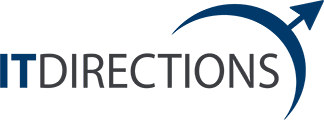 What if we think differently about the technology applications our businesses use on a daily basis?
What if we think differently about the technology applications our businesses use on a daily basis?
Change the technology paradigm and give your ERP system a face, name, and skillset. Describe your CRM system’s personality. Do its peers enjoy working with it? Is he/she a valuable team member who makes their lives easier or more difficult? What happens when you think of your technology as another team of employees?
What parts of the business are short staffed and would benefit from new innovative work horses? Which system is a favorite among your customers? Who are the undocumented wild-card team members everyone relies upon (e.g. Excel-based shadow systems) and do they present any risk to the business? Is there a culture clash between your newer cloud solutions and your veteran on-premise applications?
Justify Technology Investments Differently
IT investments might be easier to justify when you communicate a technology assessment using this paradigm. Give each system an annual review. Prepare a professional development plan to shore-up deficiencies or optimize growth potential. Identify which should be retired and/or replaced. Prioritize open positions to be filled and build-out your business’ overall skills and capabilities. Determine what balance of work simplification and adding applications best achieves your goals.
Better IT Strategy Results
Cloud and on-premise applications play and important role in your overall business performance. Here are a few reasons this new paradigm achieves better results in your IT strategic planning process:
- No single person can do everything. The same is true for your applications. Target a portfolio of applications which can work well together.
- People aren’t static and neither should be your technology. Improve results by setting expectations for technology’s performance, measuring it, and then course correcting where necessary.
- Generations operate differently and thus need different recruiting, onboarding and oversight strategies to be effective. Modern cloud-based solutions work quite differently than more mature legacy technologies; however they’ll work well together if you understand and accommodate these differences.
We’d love to hear from you. Tell us what you think and whether this innovative approach worked for you. Call us and we can help you put together a winning (application) team!






